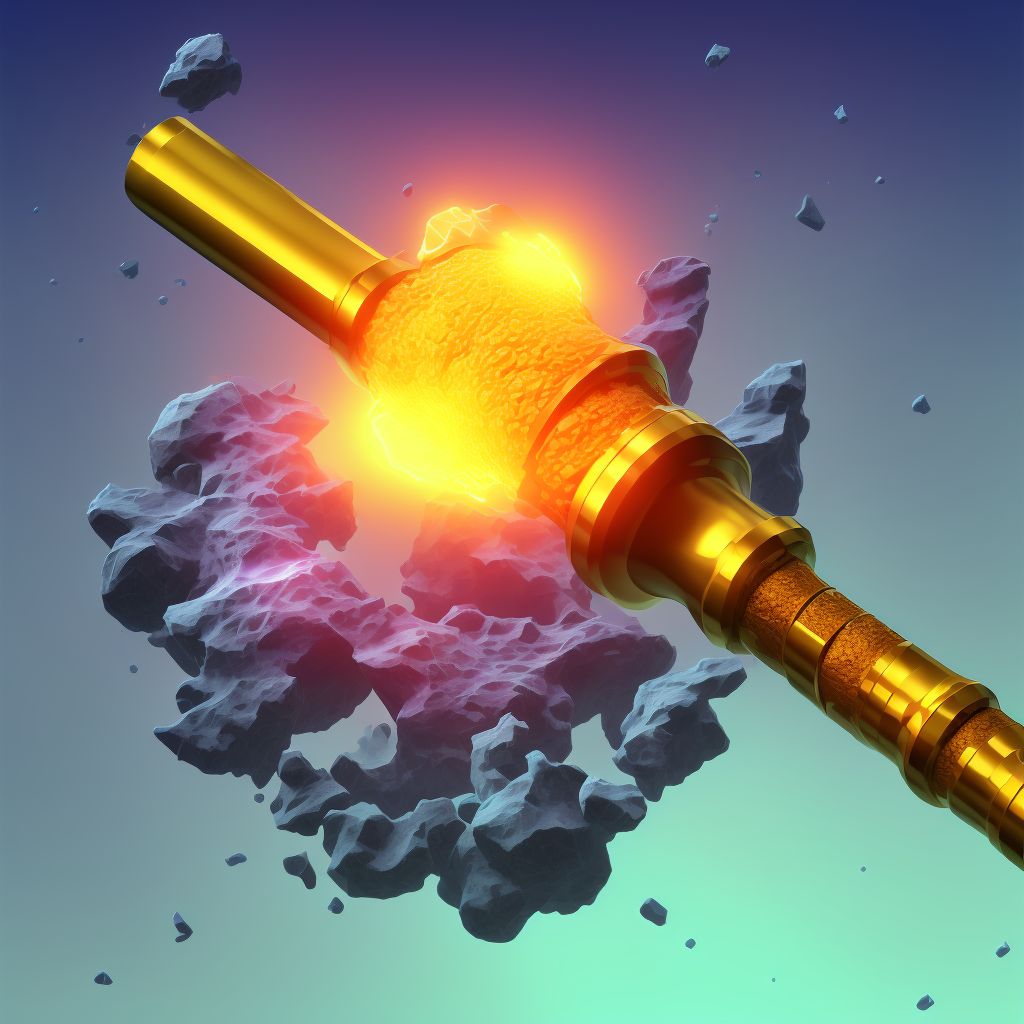
Nondisplaced oblique fracture of shaft of unspecified tibia, subsequent encounter for open fracture type IIIA, IIIB, or IIIC with delayed healing Save
ICD-10 code: S82.236J
Disease category: S82.236: Nondisplaced oblique fracture of shaft of unspecified tibia
Nondisplaced Oblique Fracture of Shaft of Unspecified Tibia: Understanding Delayed Healing
A nondisplaced oblique fracture of the shaft of an unspecified tibia refers to a specific type of bone break in the lower leg. This fracture occurs when the tibia bone breaks at an angle, but the bone fragments remain aligned and in their proper position. In some cases, this fracture may require an open reduction, followed by internal fixation using plates, screws, or rods to stabilize the bone.
In subsequent encounters, when an open fracture type IIIA, IIIB, or IIIC is diagnosed, delayed healing can occur. Delayed healing refers to a situation where the bone takes a longer time than usual to heal or fails to heal completely. Several factors can contribute to delayed healing, including infection, poor blood supply, inadequate immobilization, and patient-related factors like smoking or certain medical conditions.
To manage a nondisplaced oblique fracture of the tibia with delayed healing, it's crucial to consult with a healthcare professional. They will assess the fracture and devise a treatment plan tailored to the patient's specific needs. Treatment may involve addressing any underlying infection, improving blood supply to the affected area, and providing additional support through external fixation or bone grafting, if necessary.
During the healing process, patients should follow their healthcare provider's recommendations and adhere to proper care techniques. This may include keeping weight off the affected leg, using assistive devices like crutches or walkers, and engaging in physical therapy exercises to improve strength and range of motion.
- Seek medical attention: If you suspect a fracture, it's essential to seek medical attention promptly. A healthcare professional will perform a thorough examination and recommend appropriate diagnostic tests.
- Immobilization: Immobilizing the affected leg with a cast, splint, or brace helps prevent further injury, promotes alignment, and supports the healing process.
- Follow-up appointments: Regular follow-up appointments with your healthcare provider are crucial to monitor the healing progress and make any necessary adjustments to the treatment plan.
- Proper nutrition: Consuming a balanced diet rich in vitamins and minerals supports bone health and aids in the healing process. Ensure your diet includes adequate amounts of calcium, vitamin D, and protein.
Remember, every fracture and healing process is unique, so it's important to consult with a healthcare professional for personalized advice. By following the recommended treatment plan and taking proper care, individuals with a nondisplaced oblique fracture of the shaft of the tibia can improve their chances of successful healing.
Treatment of Nondisplaced oblique fracture of shaft of unspecified tibia, subsequent encounter for open fracture type IIIA, IIIB, or IIIC with delayed healing:
Treatment Options for Nondisplaced Oblique Fracture of the Shaft of Unspecified Tibia, Subsequent Encounter for Open Fracture Type IIIA, IIIB, or IIIC with Delayed Healing
Dealing with a nondisplaced oblique fracture of the shaft of the unspecified tibia can be a challenging experience. If you're in the subsequent encounter phase and have been diagnosed with an open fracture type I...
To see full information about treatment please Sign up or Log in